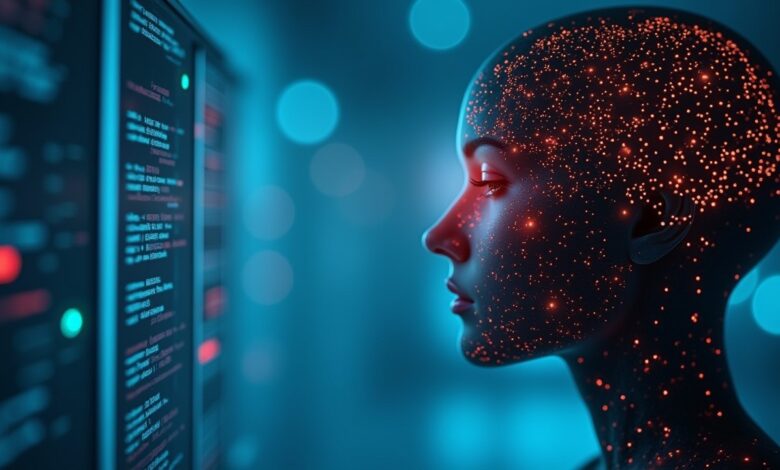Artificial Intelligence: Computers that are smarter than you

Artificial Intelligence: Its future & simple explanation of its applications
Artificial Intelligence(AI) is the intelligence created artificially. It is something achieved by the clever combination of programming & sensor systems working perfectly in tandem. Put basically, it is the ability of machines & computer programs to intelligently adapt to surroundings & do some task specifically required by the conditions & location.
Artificial Intelligence & the practical applications of it like robots & bot programs are indebted to one man- Alan Turing, pioneer of Artificial Intelligence. He was the first one to clearly define what the whole thing was & a test for proving that a machine is capable of being artificially intelligent.
An artificially intelligent entity, should be thinking on its own, with little or no dependence on humans for its thought processes & should be able to predict and appropriately act to unexpected situations. This is of course a challenge to the programmers since such a machine requires a lot of processing power and a powerful database with a large number of pre-programmed situations.
The central problems (or goals) of AI research include reasoning, knowledge, planning, learning, natural language processing (communication), perception and the ability to move and manipulate objects. General intelligence is still among the field’s long-term goals.
Currently popular approaches include statistical methods, computational intelligence and traditional symbolic AI. There are a large number of tools used in AI, including versions of search and mathematical optimization, logic, methods based on probability and economics, and many others.
The AI field is interdisciplinary, in which a number of sciences contribute equally including computer science, mathematics, psychology, linguistics, philosophy and neuroscience, as well as other specialized fields such as artificial psychology.
Alan Turing is famous for framing a group of laws known as the Turing test. If a machine or program passes the Turing test, it is considered to be artificially intelligent. The Turing test is difficult to understand so simply I’ll explain about it:
Take three entities A,B & C. One of them is a human. The 3 entities sit in different rooms & does not see each other. So you know that one of them is certainly a human. Let’s take him as C. The other two (ie : A & B) contact him via text messages or voice but cannot see each other.
If the machine (or machines, because we know only about C which is a human. The rest two can both be robots, or either of them can be a robot) is capable of misleading C to think that it is a human, then the machine is said to be artificially intelligent.
So what are the essential abilities to be possessed by an Artificially intelligent machine? Those are:
Deduction, reasoning, problem solving:
Early Artificial Intelligence: Computers that are smarter than you researchers developed algorithms that imitated the step-by-step reasoning that humans use when they solve puzzles or make logical deductions. By the late 1980s and 1990s, AI research had also developed highly successful methods for dealing with uncertain or incomplete information, employing concepts from probability and economics.
For difficult problems, most of these algorithms can require enormous computational resources. The amount of memory or computer time required becomes astronomical when the problem goes beyond a certain size. The search for more efficient problem-solving algorithms is a high priority for AI research.
Human beings solve most of their problems using fast, intuitive judgements rather than the conscious, step-by-step deduction that early AI research was able to model.
AI has made some progress at imitating this kind of “sub-symbolic” problem solving: embodied agent approaches emphasize the importance of sensorimotor skills to higher reasoning; neural net research attempts to simulate the structures inside the brain that give rise to this skill; statistical approaches to AI mimic the probabilistic nature of the human ability to guess.
Knowledge representation:
Knowledge representation and knowledge engineering are very important in AI research. Many of the problems machines are expected to solve will require extensive knowledge about the world. Among the things that AI needs to represent are: objects, properties, categories and relations between objects; situations, events, states and time; causes and effects; knowledge about knowledge (what we know about what other people know); and many other, less well researched domains.
A representation of “what exists” is an ontology: the set of objects, relations, concepts and so on that the machine knows about.
Among the most difficult problems in knowledge representation are:
Default reasoning and the qualification problem:
Many of the things people know take the form of “working assumptions.” For example, if a bird comes up in conversation, people typically picture an animal that is fist sized, sings, and flies. None of these things are true about all birds. John McCarthy identified this problem in 1969 as the qualification problem: for any common sense rule that AI researchers care to represent, there tend to be a huge number of exceptions. Almost nothing is simply true or false in the way that abstract logic requires. AI research has explored a number of solutions to this problem.
Common sense knowledge:
Research projects that attempt to build a complete knowledge base of common sense knowledge require enormous amounts of laborious ontological engineering they must be built, by hand, one complicated concept at a time. A major goal is to have the computer understand enough concepts to be able to learn by reading from sources like the Internet, and thus be able to add to its own ontology.
The subsymbolic form of some commonsense knowledge
Much of what people know is not represented as “facts” or “statements” that they could express verbally.
For example, a chess master will avoid a particular chess position because it “feels too exposed” or an art critic can take one look at a statue and instantly realize that it is a fake. These are intuitions or tendencies that are represented in the brain non-consciously and sub-symbolically. Knowledge like this informs, supports and provides a context for symbolic, conscious knowledge. As with the related problem of sub-symbolic reasoning, it is hoped that situated AI, computational intelligence, or statistical AI will provide ways to represent this kind of knowledge.
Planning.
A hierarchical control system is a form of control system in which a set of devices and governing software is arranged in a hierarchy.
Intelligent agents must be able to set goals and achieve them. They need a way to visualize the future (they must have a representation of the state of the world and be able to make predictions about how their actions will change it) and be able to make choices that maximize the utility of the available choices.
In classical planning problems, the agent can assume that it is the only thing acting on the world and it can be certain what the consequences of its actions may be. However, if the agent is not the only actor, it must periodically ascertain whether the world matches its predictions and it must change its plan as this becomes necessary, requiring the agent to reason under uncertainty.
Machine Learning:
Machine learning is the study of computer algorithms that improve automatically through experience and has been central to AI research since the field’s inception.
Unsupervised learning is the ability to find patterns in a stream of input. Supervised learning includes both classification and numerical regression. Classification is used to determine what category something belongs in, after seeing a number of examples of things from several categories.
Regression is the attempt to produce a function that describes the relationship between inputs and outputs and predicts how the outputs should change as the inputs change. In reinforcement learning the agent is rewarded for good responses and punished for bad ones.
The agent uses this sequence of rewards and punishments to form a strategy for operating in its problem space. These three types of learning can be analyzed in terms of decision theory, using concepts like utility. The mathematical analysis of machine learning algorithms and their performance is a branch of theoretical computer science known as computational learning theory.
Within developmental robotics, developmental learning approaches were elaborated for lifelong cumulative acquisition of repertoires of novel skills by a robot, through autonomous self-exploration and social interaction with human teachers, and using guidance mechanisms such as active learning, maturation, motor synergies, and imitation.
Artificial Intelligence: Natural language processing
A parse tree represents the syntactic structure of a sentence according to some formal grammar.
Natural language processing gives machines the ability to read and understand the languages that humans speak. A sufficiently powerful natural language processing system would enable natural language user interfaces and the acquisition of knowledge directly from human-written sources, such as newswire texts. Some straightforward applications of natural language processing include information retrieval, text mining, question answering and machine translation.
Creative Commons. Image by Leechuck
A common method of processing and extracting meaning from natural language is through semantic indexing. Increases in processing speeds and the drop in the cost of data storage makes indexing large volumes of abstractions of the user’s input much more efficient.
Perception:
Machine perception is the ability to use input from sensors (such as cameras, microphones, tactile sensors etc.) to deduce aspects of the world. Computer vision is the ability to analyze visual input. A few selected sub problems are speech recognition, facial recognition and object recognition.
Motion and manipulation:
Field of robotics is closely related to AI. Intelligence is required for robots to be able to handle such tasks as object manipulation and navigation, with problems of localization (ie:knowing where you are, or finding out where other things are), mapping (learning what is around you, building a map of the environment), and motion planning (figuring out how to get there) or path planning (going from one point in space to another point, which may involve compliant motion – where the robot moves while maintaining physical contact with an object).
As a final note, I’d say that the quest of scientists & programmers to create more & more artificially intelligent entities has created a lot of possibilities in the field of AI & Robotics. And so the research in developing smarter machines will continue.
Maybe, in future your computer can outsmart you in terms of productivity! Who knows! Hope that good things happen.
Read also: Technology in Sports: Improvements in decisions & results of sports




